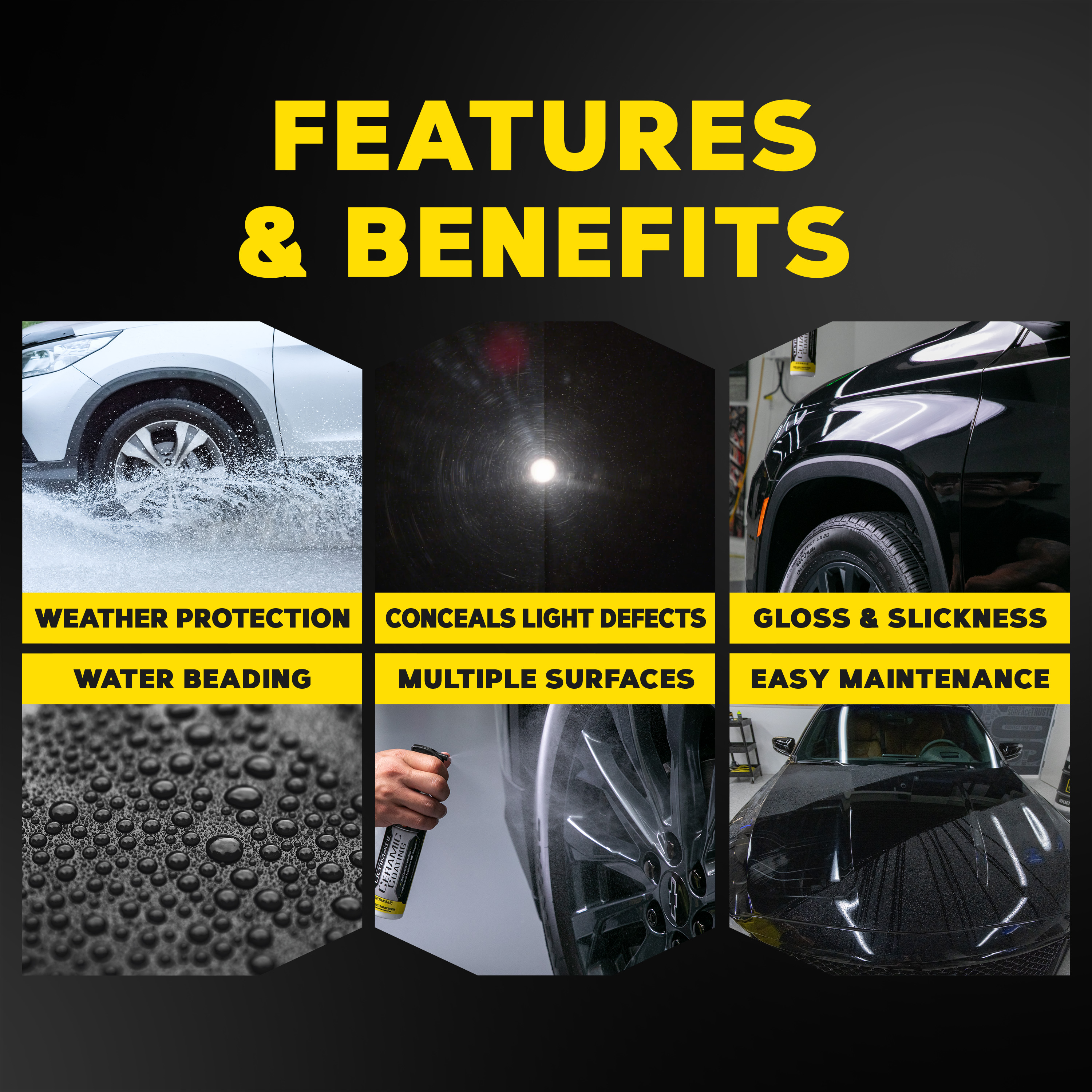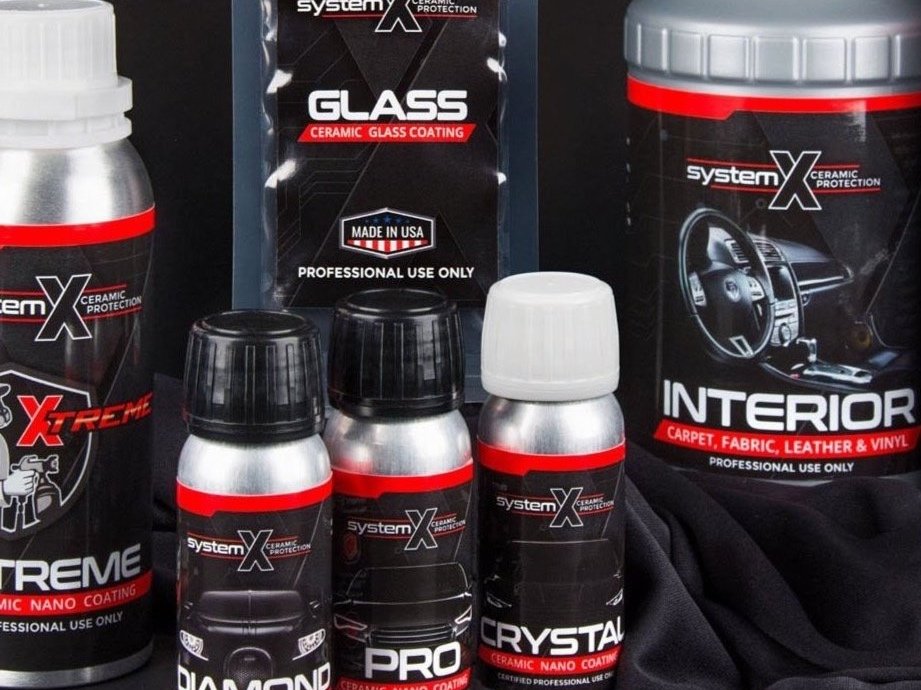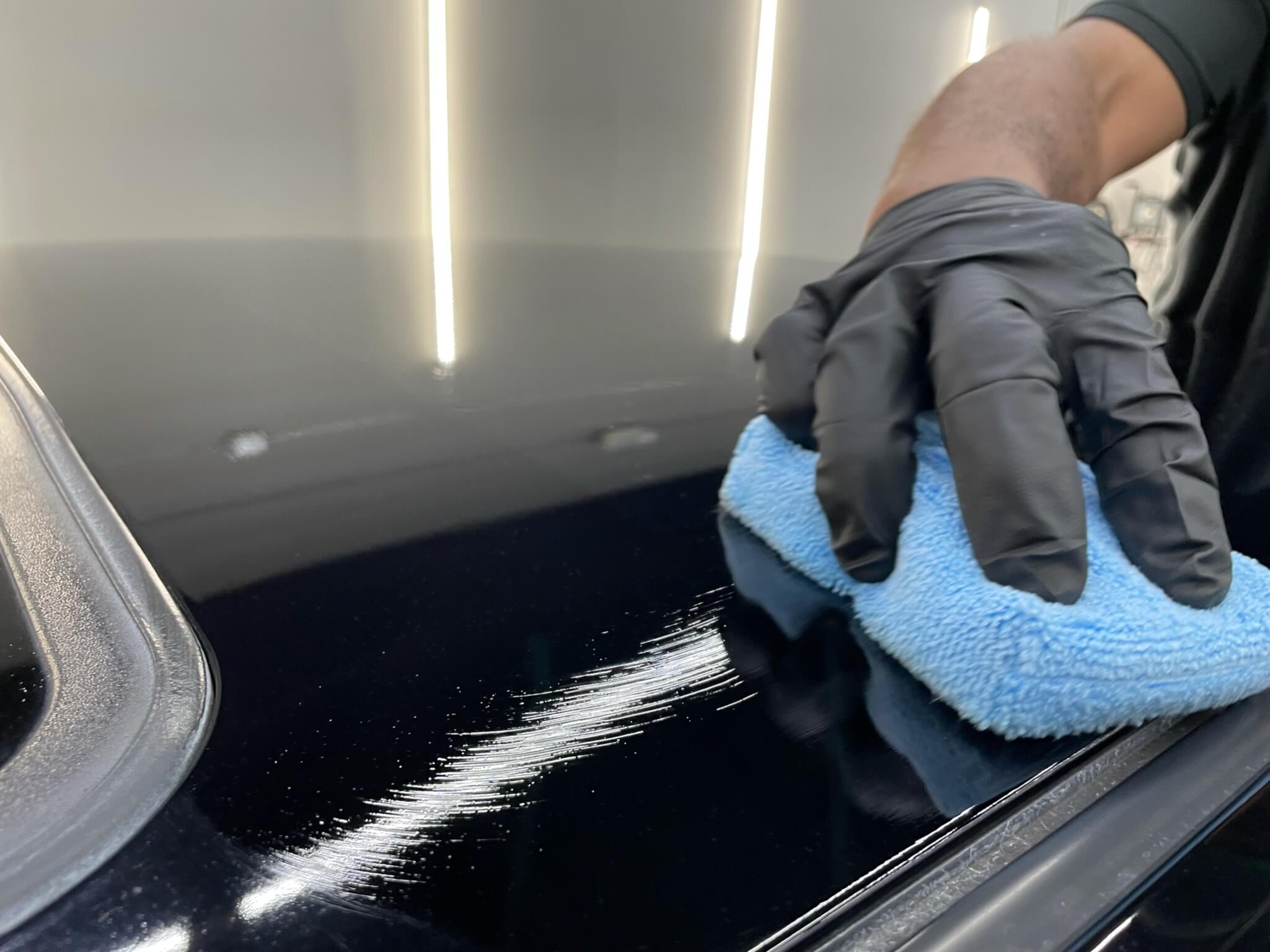The Duty of Ceramic Coating Philadelphia in Preventing Scratches and Damage
The Duty of Ceramic Coating Philadelphia in Preventing Scratches and Damage
Blog Article
Why Ceramic Finishing Is the Ultimate Service for a Perfect End Up
Ceramic finishing has arised as a leading remedy for those looking for a flawless finish for their lorries, many thanks to its amazing toughness and protective attributes. What aspects really established ceramic finishing apart?
What Is Ceramic Layer?

When used correctly, ceramic finish develops a hydrophobic surface that repels water and dust, making it simpler to clean up and preserve. Unlike conventional waxes or sealers, which usually use short-lived protection, ceramic finishes can last for several years, relying on the item quality and application technique. The procedure of using ceramic coating needs meticulous preparation, including complete cleaning and often repaint correction, to guarantee optimal bonding and performance.
Ceramic finishes are not limited to vehicle surface areas; they can likewise be utilized on numerous materials, including glass, metal, and plastics, offering a functional remedy for boosting defense. Overall, ceramic coating represents a considerable improvement in surface security technology, combining both visual and useful advantages for a variety of applications.
Advantages of Ceramic Finish
While lots of surface security options exist, the advantages of ceramic layer stand out as a result of its unique residential or commercial properties and lasting performance. One of the main advantages is its outstanding toughness. Ceramic Coating Philadelphia. Unlike standard wax or sealers that require constant reapplication, ceramic finishings offer a resilient layer that can last for a number of years, substantially reducing upkeep efforts
Another significant advantage is improved security against ecological pollutants. Ceramic coverings produce a hydrophobic surface area that drives away water, dirt, and various contaminants, making it easier to cleanse. This function not just preserves the lorry's appearance yet likewise reduces the danger of rust and oxidation, especially in rough climate condition.
Furthermore, ceramic layers offer superior resistance to UV rays, protecting against fading and destruction of paint with time. This UV protection is critical for maintaining the aesthetic worth of surface areas and lorries revealed to route sunshine.
Additionally, the glossy finish accomplished with ceramic coating improves the total visual allure, giving surfaces a showroom-quality shine. Generally, ceramic finishings represent a considerable advancement in surface security technology, supplying long-lasting benefits that accommodate both useful and aesthetic requirements.
Just How It Works
Comprehending the scientific research behind ceramic coverings exposes just how they supply such amazing security and longevity. At its core, a ceramic layer is a liquid polymer that chemically bonds with the vehicle's factory paint. This bonding produces a safety layer that is both oleophobic and hydrophobic, repelling water, dirt, and oil. The key component of most ceramic coverings is silicon dioxide (SiO2), which is acquired from quartz. This compound adds to the covering's firmness and resistance to scrapes, UV rays, and ecological contaminants.
The application procedure involves numerous actions, consisting of surface prep work, which is important to achieving optimal adhesion. Once applied, the covering undergoes a curing procedure, throughout which it sets and creates a semi-permanent bond with the paint surface. This bond is what differentiates ceramic finishes from typical waxes and sealants, offering a longer-lasting protective barrier that can sustain for years.
Additionally, the density of the coating can improve its safety top qualities, making sure that it can endure severe conditions. Ultimately, the scientific research of ceramic finishes integrates sophisticated materials with ingenious application methods to provide an exceptional level of helpful resources defense and visual improvement for cars.
Comparison With Standard Techniques
When compared to standard paint protection approaches such as sealers and waxes,The advantages of ceramic coverings come to be particularly noticeable. While waxes provide a short-term sparkle, generally lasting a couple of weeks to a pair of months, ceramic finishings sites give a resilient safety layer that can sustain for a number of years. This sturdiness significantly decreases the regularity of reapplication, making ceramic coverings a much more cost-efficient service with time.
Additionally, traditional approaches frequently need extensive preparation and several applications to accomplish a satisfactory level of defense. In comparison, ceramic coatings bond at a molecular level with the automobile's surface area, creating a robust shield against ecological pollutants like UV rays, acid rainfall, and roadway salts. This bond enhances the automobile's resistance to scratches and swirl marks, which are widespread with traditional waxes and sealants.
Furthermore, the hydrophobic properties of ceramic coatings fend off water and dust, bring about much easier cleaning and upkeep. On the other hand, wax and sealant-treated surfaces can draw in grime, demanding more frequent cleaning - Ceramic Coating Philadelphia. Generally, ceramic coatings not just offer exceptional protection but also deliver a more enduring and visually enticing coating, establishing them as the preferred selection for discerning lorry owners
Application and Maintenance Tips

Utilizing a foam applicator, use the finishing in little areas, complying with the supplier's standards regarding thickness and overlap. Allow sufficient curing time in between coats, generally 24-hour, to make certain correct bonding. After application, it is essential to avoid exposure to water or harsh elements for at least a week to permit the finish to totally heal.
For upkeep, clean the lorry frequently with pH-balanced soaps and stay clear of unpleasant materials. Touchless vehicle cleans are recommended to lessen scraping. Furthermore, making use of a ceramic upkeep spray can improve the coating's hydrophobic residential or commercial properties and durability. Routine examinations for any kind of indicators of wear will assist maintain the finishing's honesty and maintain that excellent finish.
Final Thought
In final thought, ceramic layer emerges as an exceptional choice for accomplishing a flawless automobile coating. By forming a robust bond with factory paint, ceramic finish successfully guards versus scratches, UV rays, and ecological impurities.

Report this page